A version of this article previously appeared on JacalynBeales.com.
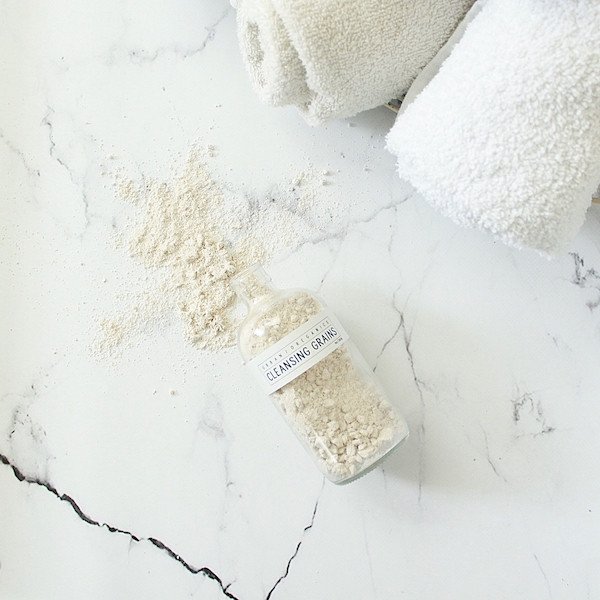
One of the latest and most crush-worthy trends in skincare right now are these neat little things called cleansing grains. I love them, you probably love them, and so do a whole whack of other people who have popularized the use of these grains as a miracle go-to for sensitive skin, dry complexions, or gentle exfoliants.
The concept behind cleansing grains is quite simple: powdered grains are combined with other natural ingredients for a gentle facial cleanser that can be used on virtually all skin types. Sounds pretty rad, right? Well, it would be, if most of the cleansing grains we see littering store shelves were actually green. I was not-so-pleasantly-surprised to find, during a recent shopping trip which had me stopping by Sephora to grab a gift card (eeeeek, I know, but I can’t force people to stop buying chemical-laden makeup, mmmmkay?), that most of the cleansing grains on their shelves boasted ingredient lists with artificial preservatives (whyyyyyy?), glycerin (who knows where the heck it came from), and other unsavory additives. Cleansing grains are typically considered as more natural alternatives to soapy, chemical cleansers, but many mainstream brands have butchered that reputation.
In addition to being laden with unnecessary, artificial chemicals and ingredients, the mainstream cleansing “grain” can also be misleading for green beauty babes because, perhaps unsurprisingly for those who have tried them, not every bottle of cleansing grains is actually made using a grain. Some are made using almond powder, rice powder, unrefined sugars, and other natural exfoliants. Brands using mostly artificial additives and ingredients may also use these bases for their cleansing “grains.” Most commonly, however, cleansing grains will be made with some sort of grain, such as dried wheat or oats. The type of “grain” itself isn’t necessarily important, as long as it is natural.
Cleansing grains are often characterized by staple ingredients, or common [natural] additives that are used for specific skin types or issues.
Common ingredients in natural cleansing grains:
- a grain (often powdered or slightly grainy in texture) – this can include rice powder, ground nuts, natural sugars, quinoa, various types of oats or wheat, etc.
- clays – pink or green clays are popular additions to cleansing grains due to their ability to absorb toxins and bacteria
- activated charcoal – very typical ingredient found in cleansing grains targeting oily or acne-prone skin
- herbs/botanicals – matcha and other powdered herbs or botanicals are also common in cleansing grains
- essential oils/extracts – typically from herbs or flowers, essential oils are often added for their natural properties and scents
- dried florals – lavender being one of the most common, cleansing grains may also feature dried florals like chamomile, rose, calendula, hibiscus, etc.
Of course, different cleansing grains will and do use various ingredients, especially when made for specific skin types or issues; for example, cleansing grains made with activated charcoal are typically geared towards oily complexions. The key to choosing a good cleansing grain is to look for a natural ingredient list.
What to look for in a natural cleansing grain:
- Natural cleansing grains will be free from artificial preservatives, palm oil derivatives, fake stabilizers, microbeads, and other artificial exfoliants, and artificial fragrances
- Essential oils used in cleansing grains should be completely natural
- Avoid cleansing grains made with parabens, sulfates, or artificial foaming agents; cleansing grains shouldn’t foam or provide bubbles anyway!
- They should be dry, without the addition of jellies or milks
Once you find a cleansing grain you like, be prepared to use it properly to avoid wasting the grains. Though they typically come as fine powders, cleansing grains may also have a crumbly texture, depending on how finely ground the ingredients are. It’s important to keep in mind that cleansing grains, even when finely ground, will act as a gentle exfoliant, so whatever the texture, they will ultimately still be effective.
You may also be wondering, “Do cleansing grains expire?” If you are using grains without a preservative, it’s safe to assume that, yes, your cleansing grains have an expiration date. My rule of thumb here is to use your grains within three months of purchasing them, especially if you will be keeping them in your shower or near your sink, where they will be exposed to moisture or water. I often use my bottle of cleansing grains within 1-2 months, and they remain effective.
A few pointers for making the most of your cleansing grains:
- Expect mess – cleansing grains are messy, which means you will often be left with a sink, tub, or shower spotted with the grains. Most are easy enough to clean up after and their natural ingredients are typically safe to wash down your drain(s)
- Less is more – you really only need about a teaspoon of cleansing grains mixed with a little bit of water to cleanse your entire face; using more than that will probably result in much of the grains going down your drain!
- Store in a dry place – get the most out of your grains by storing them in a dry place; I take mine out of the shower each morning and keep them on my bathroom counter to avoid prolonged exposure to moisture from the shower
Choose the right cleansing grain:
Like any skincare product, cleansing grains will work differently for everyone, and there is no guarantee that one type of cleansing grain will work versus another that doesn’t. The best way to discover the right cleansing grain is to try different ones; you can ask a brand for samples of their cleansing grains, and most offer sample packs for purchase regardless. You should also do a patch test before using the grains all over to discern whether they are compatible with your skin.
If you are, however, wondering what type will work best for your skin, there are a few common “types” of cleansing grains geared towards common “types” of skin issues. For example:
- Cleansing grains with pink or red clays – typically known for their rich, anti-aging properties, cleansing grains with pink or red clays and florals (such as rose, hibiscus, etc.) are commonly geared towards mature skin, as they offer great moisture and hydration for aging skin. However, anyone can use these types of cleansing grains!
- Cleansing grains with green, yellow, Himalayan, rhassoul, or kaolin clays – these cleansing grains are often geared towards all complexions/skin types but work especially well for cleansing sensitive, blemish-prone skin due to their antibacterial properties.
- Cleansing grains with activated charcoal – these cleansing grains are notoriously used for more oily complexions, as activated charcoal is known for naturally unclogging pores and killing bacteria thanks to its magnetic-like absorption properties.
*Most cleansing grains are safe for all skin types; however, you may experience better results when using a cleansing grain geared towards your specific skin issue or malady. Usually, cleansing grains meant for specific use will contain other natural ingredients which further benefit the skin. For instance, grains made specifically for acne-prone skin may feature activated charcoal, as well as essential oils and extracts which are known for naturally treating acne.
Final recommendations:
The following are a few of my personal favorites and are completely natural. Keep in mind, however, that cleansing grains work differently for everyone, and you should do a patch test before using any cleansing grain just as you should with any skincare product. If you’d like to DIY your own cleansing grains, I have personally tried (and really enjoy) this recipe, as well as this one.
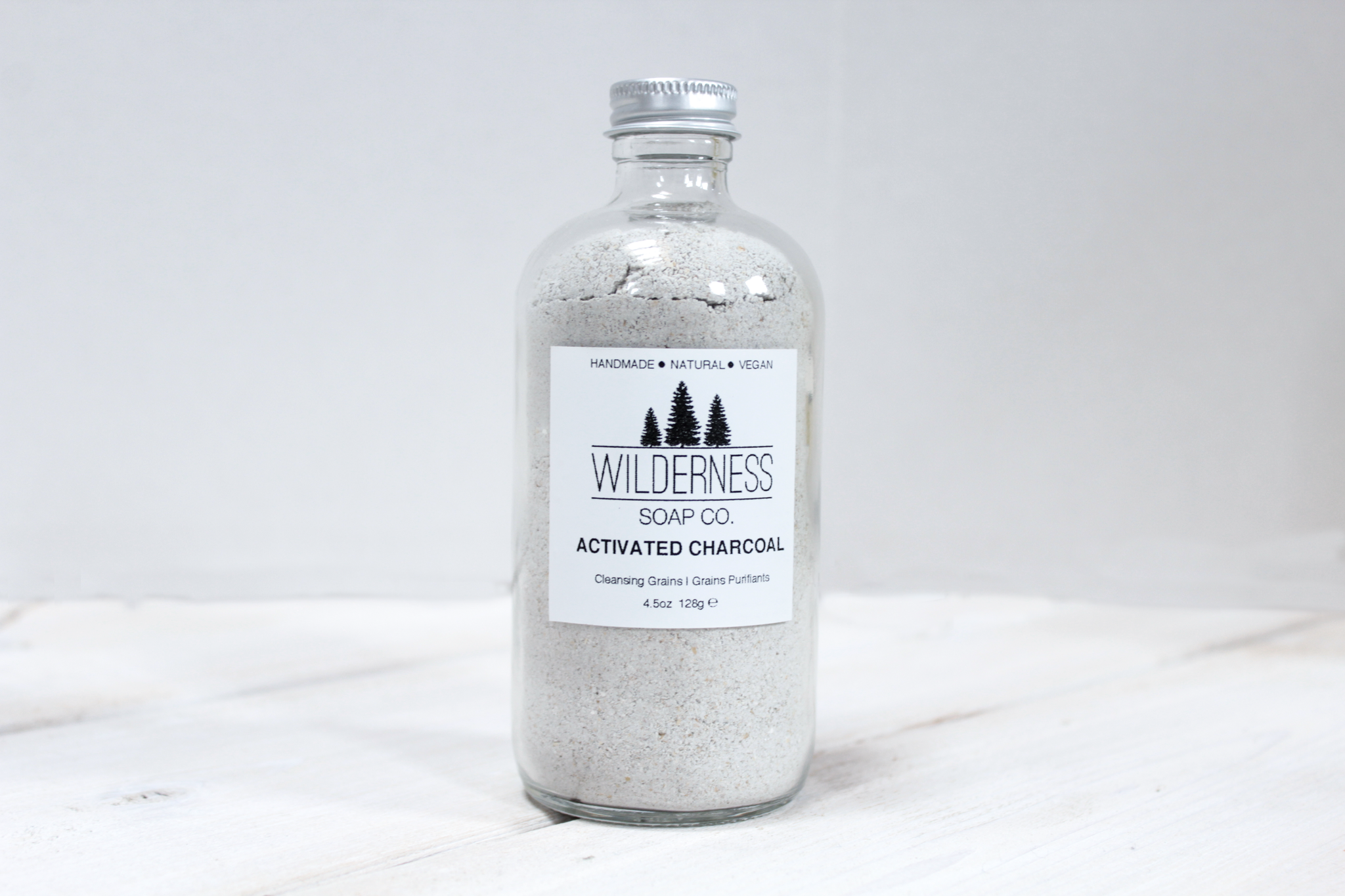
Wilderness Soap Co. Activated Charcoal Cleansing Grains
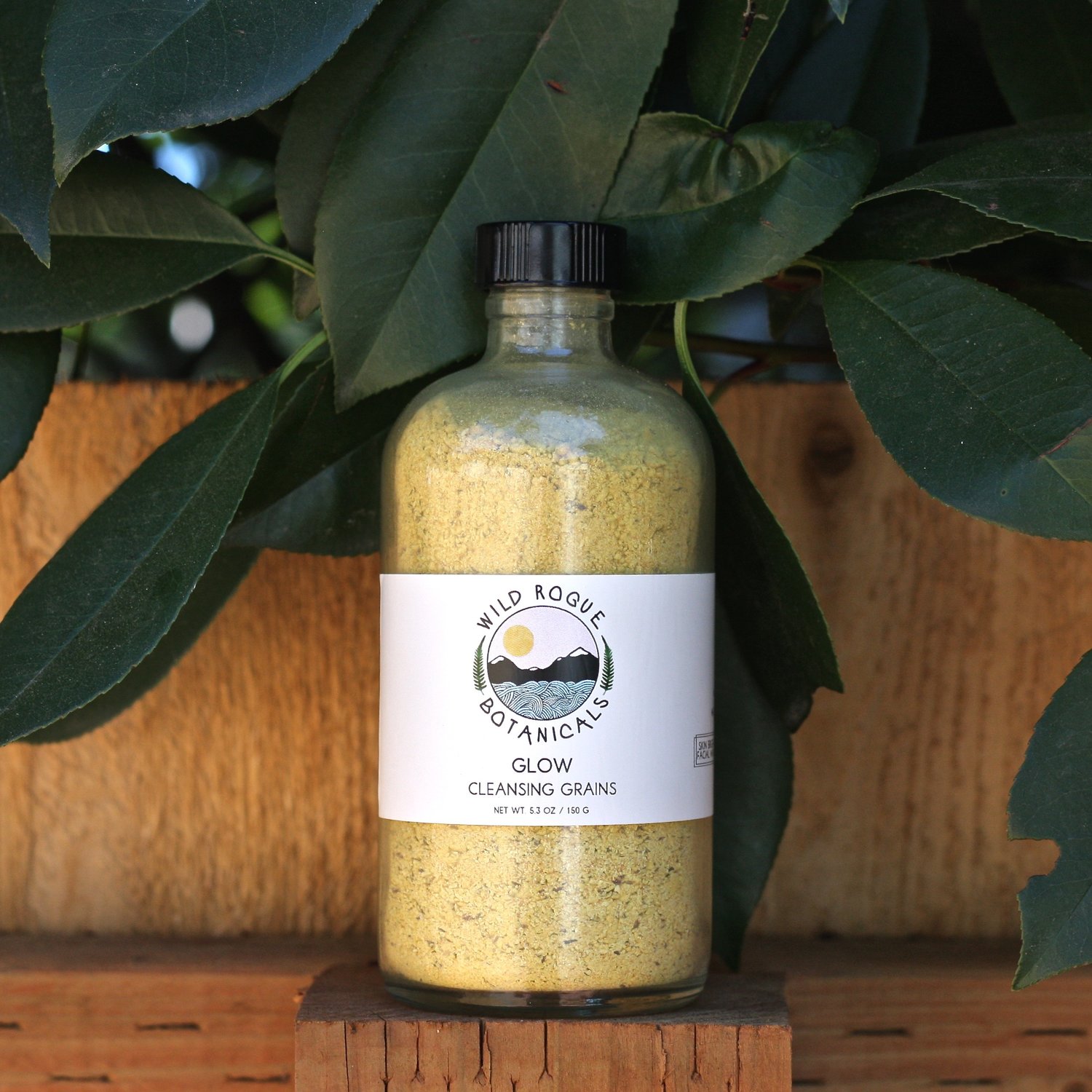
Wild Rogue Botanicals Glow Cleansing Grains

Urban Oreganics Bare Cleansing Grains
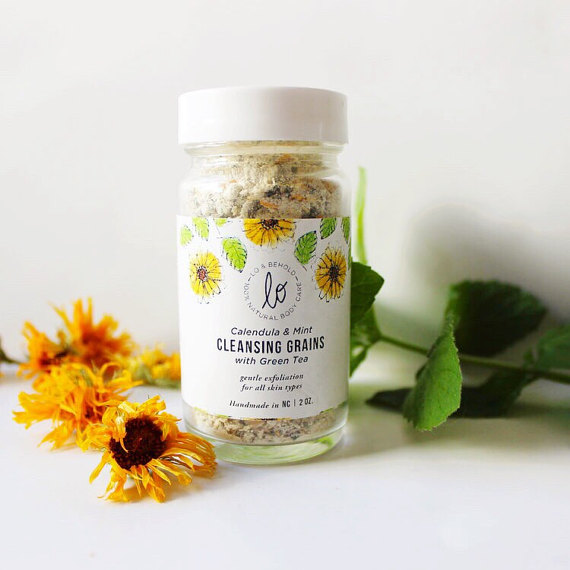
Lo & Behold Calendula & Mint Cleansing Grains
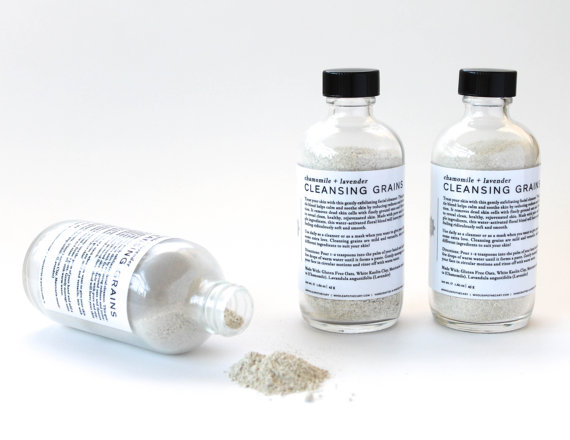
Whole Apothecary Lavender Cleansing Grains
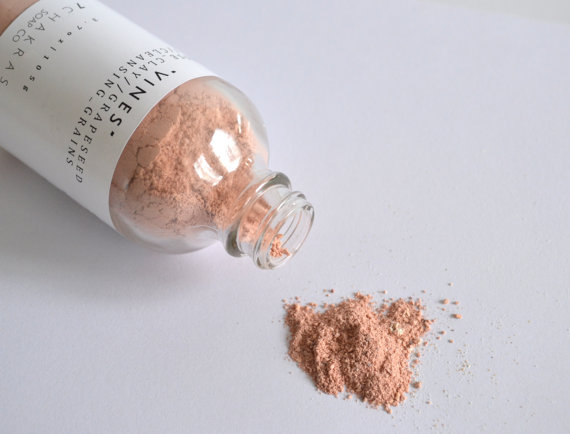
7 Chakras Soap Co. Rose Clay & Grapeseed Cleansing Grains
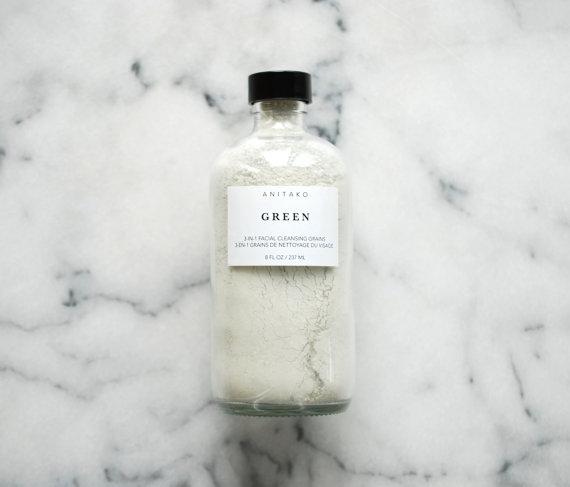
ANITAKO Green Cleansing Grains
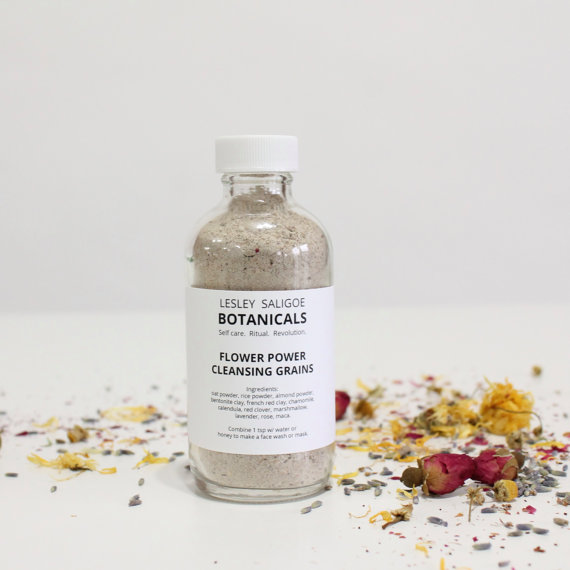
Lesley Saligoe Botanicals Flower Power Cleansing Grains
Have you tried cleansing grains?
Also by Jacalyn: Natural Beauty: Microbead Alternatives for Scrub & Re-Thinking Exfoliation
This Unusual Skincare Ingredient Will Make Your Skin Positively Radiant
Related: Why Hyaluronic Acid Is a Secret Weapon for All Skin Types
Get more like this–sign up for our newsletter for exclusive inspirational content!
__
Photo: Respective brands




